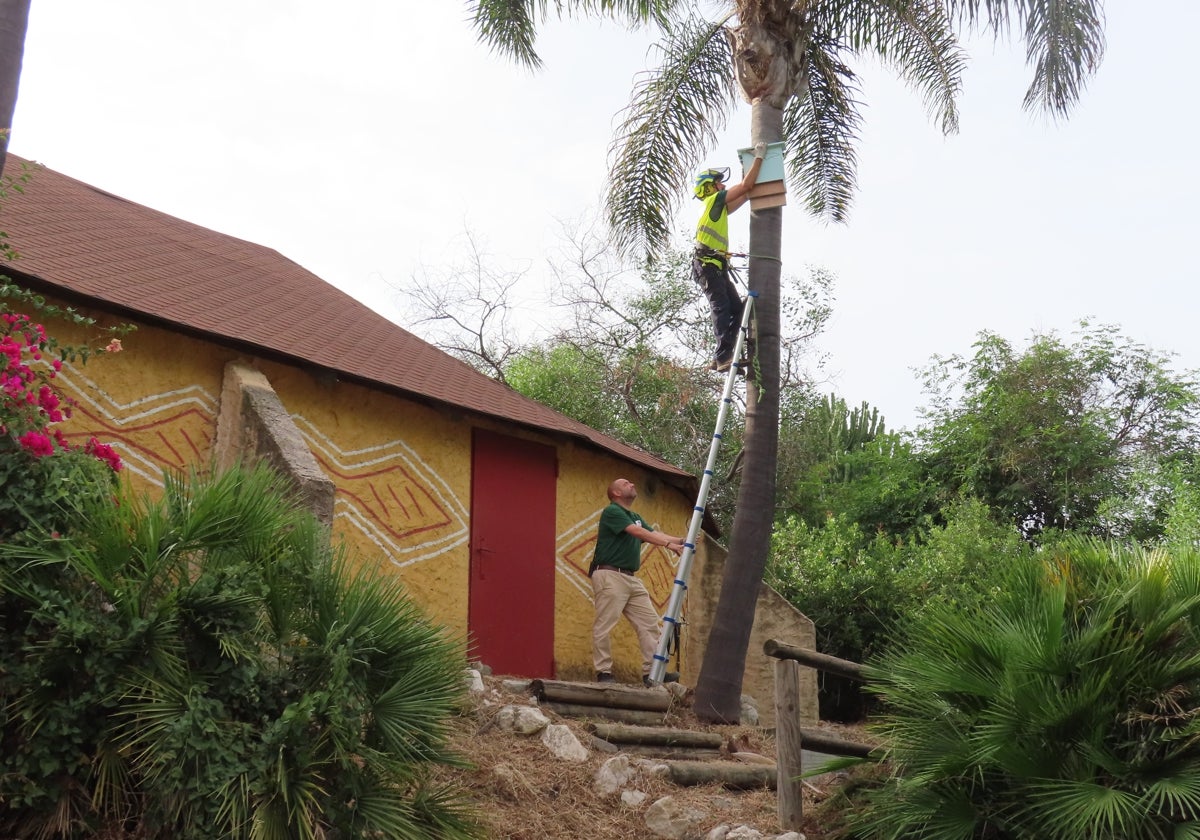Bat colonies encouraged to naturally reduce pests including the tiger mosquito and other disease-carrying insects
Selwo Estepona and Murciélagos Málaga have launched a project to protect these mammals, which have proven benefits for the ecosystem, and facilitate their reproduction after the local population decreased by almost a half in recent years
Wildlife park Selwo Estepona is currently working on a long-term project to maintain the bat population in the park and the Costa del Sol municipality. Reports from recent years have shown that the number of these mammals has dropped by almost half.
Head of conservation at Selwo Eloy Serrano spoke to SUR about these curious creatures. "Currently, the biggest enemies of bats are pesticides and human pressure, which is displacing them to areas where they can live and reproduce in a more peaceful way. What we want is to ensure that they stay here and that they can increase their population because of their benefits to humans, including controlling insect pests."
This project, which will last several years, relies on the collaboration with Murciélagos Málaga and its founder - Antonio Moret. Thanks to him, they have managed to identify the species in the park. To do this, they used special equipment to record the acoustic signals emitted by the bats, which are inaudible to humans.
The three species they discovered are Pipistrellus Pygmaeus, Pipistrellus Kuhlii and Pipistrellus Pipistrellus, all no bigger than 5 centimetres and "in need of protection".
Insect pests
The next step was to delimit the hunting routes of the bats within the park. This was done by placing shelters in the high areas of trees. "The shelters are wooden huts that form part of a green corridor that they can use for roosting, resting, breeding (never for raising babies) or simply as warm shelters," Serrano said, adding that the trees are also protected from damage.
"The bat looks for stops on its nocturnal hunt, locates a shelter, enters, marks it and that smell makes other bats identify it as safe," said Moret, who has already placed around 150 of these shelters throughout the province of Malaga. After approximately two years, the occupancy rate is 80%.
The project in Selwo Estepona is in phase two - "the one that requires the most patience, as it consists of seeing if it perseveres". The next stages of the project involve environmental education, research and reproduction aid.
"We want to be a biological island. Surrounded as we are by natural parks, we have many native species to work with - birds, reptiles, etc. and we have decided to start with bats because they help reduce pests in a natural way," Serrano said, placing particular emphasis on the Asian tiger mosquito and other disease-spreading insects.
Antonio Moret added that the project "also helps to control pests that are harmful to agriculture, such as the green vine midge, the grape moth, the olive fly and the rice borer, as a pregnant bat can eat more than 3,000 insects in a single night".
What would happen if bats disappeared? "In addition to everything we have already mentioned, bats have a powerful immune system - they are reservoirs of viruses that are deadly to humans and are therefore the subject of study in medicine," said Antonio Moret. "But we tend to be afraid of them because they come out at night, we can't hear them and we think they are going to bite us, which is not the case."
"Selwo is a pioneer in this in Spain. Mass tourism, noise and light pollution, wind turbines are causing the bat population to decrease but some institutions and organisations are aware of how beneficial and necessary it is to protect these animals," Moret stated.


Comentar es una ventaja exclusiva para registrados
¿Ya eres registrado?
Inicia sesiónNecesitas ser suscriptor para poder responder.
Necesitas ser suscriptor para poder votar.